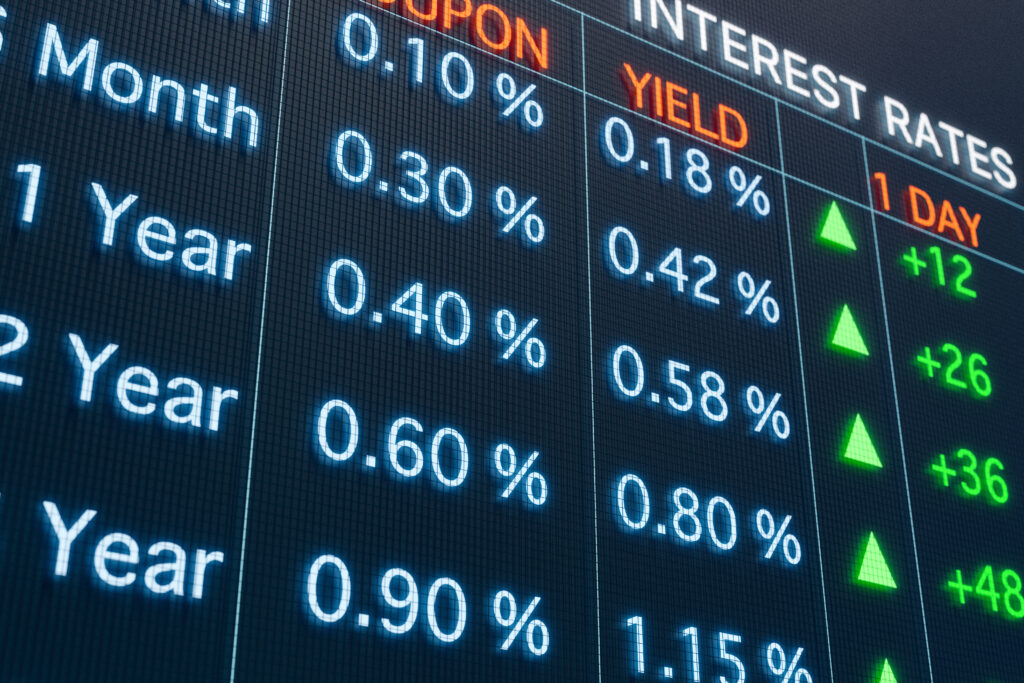One of the key indicators that economists and analysts use to determine whether we’re headed for a recession is the inverted yield curve. Historically, most recessions have been preceded by an inverted yield curve a few months before. Therefore, it’s important for real estate investors to pay attention to this rare phenomenon with an eye to how it could impact their investments and their investment strategies.
First, what is an inverted yield curve?
An inverted yield curve exists when long-term Treasury bills are yielding better returns than short-term Treasury bills. For instance, the two most popular T-bill investments are the 2-year Treasury bill and the 10-year Treasury bill. Typically, the 2-yield Treasury bill yields better returns than the 10-year T-bill. However, in recent months that relationship has inverted. On September 7, the 10-year Treasury bill yielded a return of 3.27 percent while the 2-year Treasury bill yielded a 3.45 percent return. What kind of impact could this inversion have on real estate investments in the near term and the long term? Let’s explore.

What Does an Inverted Yield Curve Mean for Real Estate Investors in the Short Term?
The last time the yield curve inverted was in 2019, just before the global pandemic ransacked the economy and sent the world spiraling into a short-term recession. At that time, the 3-month Treasury bill yield flipped the 10-year yield for a period of about four months. That was a strong signal that the economy was headed for a recession, and that’s exactly what happened the following year.’
The yield rate for the 3-month Treasury bill on September 7, 2022, was at 3.07 percent, which means the economy may still have a little bit of life left in it. But how much?
If the 3-month yield rate goes higher by as much as the spread, or the 10-year yield rate falls the same distance, we could find ourselves in the middle of a longer and stronger recession. With the Fed still tinkering with interest rates, that’s a stark possibility. But the yield curve is merely one economic indicator. Other indicators that signal the direction of the economy include consumer spending, unemployment rate, manufacturing output and rate of growth, and GDP growth.
A look at the latest Consumer Price Index indicates that consumer spending is strong. The gas and energy indexes fell in July, but that was largely due to rising gas prices. All other indexes, including real estate, were up indicating that consumers have not pulled back from buying most consumer items. Despite rising interest rates, people are still buying and selling real estate.
There is still a shortage of homes, and prices have come down since the beginning of the year. That’s encouraging home buyers even if some of them are delaying real estate purchases to see where prices and interest rates go. Since real estate is local, how the economy will impact real estate investing depends a lot on local factors.
Some analysts are calling the current environment a housing recession. To be sure, there has been a contraction, and it’s been a sharp one. Still, there are about 50 local markets where real estate prices are still at peak. That means there is room to fall in those markets.
On the jobs front, unemployment has increased to 3.7 percent, a slight increase over July, while nonfarm payroll went up by 315,000 in August.
Manufacturing output increased in the second quarter by 4.3 percent and real GDP decreased by 0.9 percent. These are signs of growth in the economy.
Overall, the economy is strong but weakening. While the yield curve has inverted, that doesn’t necessarily mean a recession is guaranteed. It does mean real estate investors should exercise caution. Be on the lookout for good deals but don’t take unnecessary risks.

Are There Long-Term Implications for An Inverted Yield Curve?
While an inverted yield curve serves as a reliable indicator of a coming recession, analysts can’t agree on which yield curve is the best indicator. Treasury bills are often used to make the prediction; however, some analysts look at various securities and the different maturities of those securities.
What that means is that an inverted yield curve among short-term and long-term T-bills indicates a recession could be on the way. But, as stated before, other economic indicators show the economy and consumer confidence to be healthy.
The more pronounced the inversion, the more likely a recession is on the way. Furthermore, the longer duration of the inversion, the more likely a recession is on the way. Assuming that the global economy is headed toward a recession, what does that spell for long-term real estate investing?
The implications are darker for short-term investing. For long-term investing, the outlook is better. That could mean that investors might shift from shorter-term investments such as fix-and-flips to buy-and-hold strategies such as rentals and multi-family. That’s not to say that an individual investor should shift strategies simply on the threat of a recession. Each investor must analyze her own investment goals and determine what is right for her own situation. It’s important to set goals and stick to those goals using a tried and tested investment strategy rather than try to second guess economic swings.
Overall, real estate investing seems to be shifting toward rentals. That doesn’t mean that some markets couldn’t see more fix-and-flip activity. It also doesn’t mean that fix-and-flip investors can’t profit from that strategy. With many investors moving toward rentals, that means an increase in competition in the rental market.
To summarize, while the economy has slowed a bit since the beginning of the year and an economic recession is looking more likely, if we do see a recession, it will have an impact on short-term real estate investing more than on long-term investing. For that reason, fix-and-flip investors may try to hedge their portfolios with some buy-and-hold properties while buy-and-hold investors may take the time to reevaluate their portfolio allocations.
Be Cautious, Invest Smartly
Real estate investors should keep an eye on the macroeconomy and make good decisions based on the direction of the economy, but don’t let fear and uncertainty rule. Be cautious, but make smart investments based on the deal numbers instead of on news headlines.


